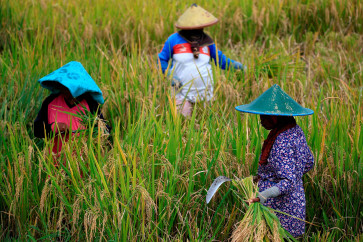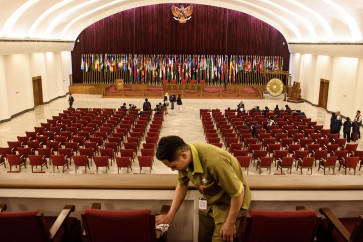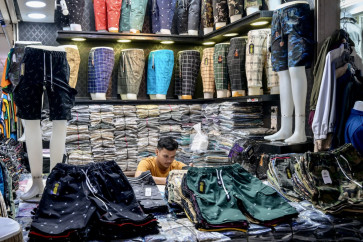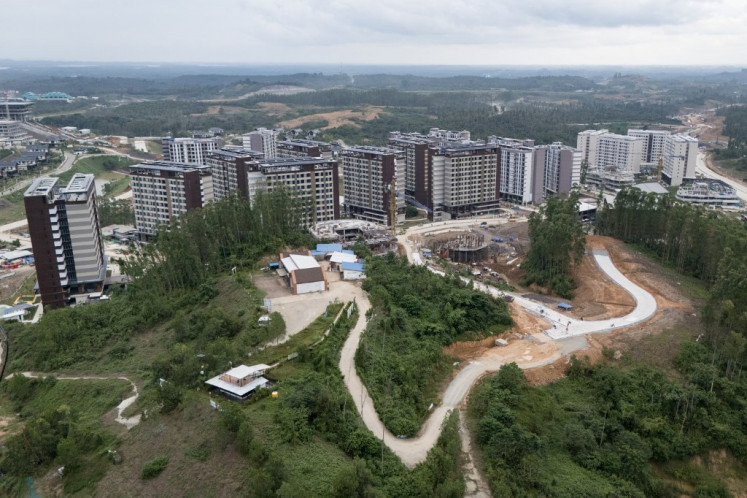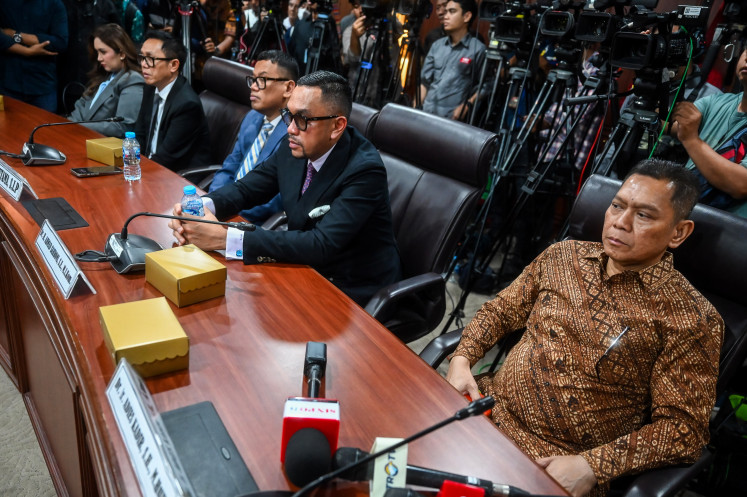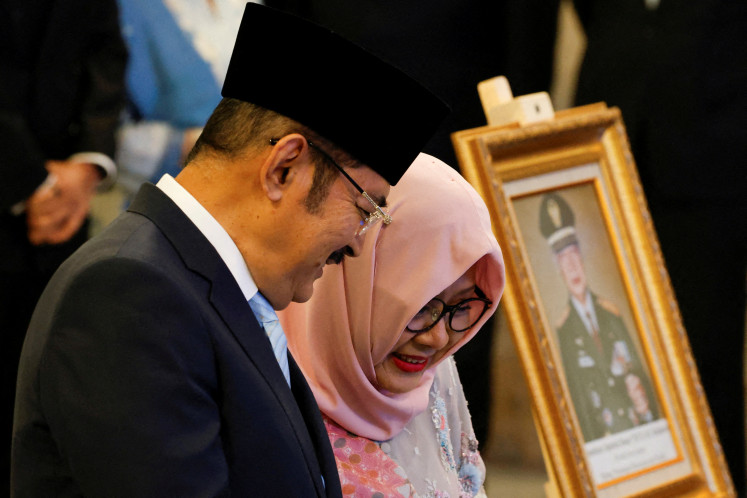Popular Reads
Top Results
Can't find what you're looking for?
View all search resultsPopular Reads
Top Results
Can't find what you're looking for?
View all search results‘Boat people’ stranded in Aceh
Unintended destination: A group of Myanmarese take part in an identification process at the immigration office in Lhok Seumawe, North Aceh, on Thursday
Change text size
Gift Premium Articles
to Anyone
U
span class="caption" style="width: 398px;">Unintended destination: A group of Myanmarese take part in an identification process at the immigration office in Lhok Seumawe, North Aceh, on Thursday. They are among 55 people who claimed they were going to Malaysia only to be stranded in Aceh. JP/Hotli SimanjuntakNurul Amin, 25, never guessed the boat he was traveling on had strayed far from its intended course and had become stranded off Aceh, the westernmost province of Indonesia.
“We actually wished to go to Malaysia but in the middle of the journey the boat engine stalled and we eventually became stranded here,” said Amin.
Together with 54 other Myanmarese citizens, Amin was eventually rescued by a passing fishing boat after being stranded in Bluka Teubai sea off Lhokseumawe, North Aceh, on Feb. 1. Local fishermen found the group around 1:30 p.m. in a state of hunger.
According to Amin, they came from Suttwey district in Myanmar and were destined for Malaysia, where he claimed he had relatives living and working. “We departed around mid-January. We had been at sea for around 35 days but we encountered engine problems and ran out of food,” Nurul said in broken English.
Their boat drifted aimlessly due to rough seas and they finally arrived in Aceh and were found by local fishermen. “The wooden boat has leaks but its engine is still functioning,” said North Aceh Naval Commander Jamali Abdullah.
According to Jamali, of the 55 Rohingya refugees (the Rohingya being a Myanmarese Muslim ethnic group), four of them are children between the ages of 12 and 13. Their boat was towed to land to get food aid and registered by the local immigration officers. “We couldn’t communicate with them fluently due to a language barrier,” said Jamali.
The Lhokseumawe Immigration Office has started recording these so-called “boat people” from Myanmar. Health authorities have also examined their condition.
Lhokseumawe Immigration Office head Irawan said his office had also taken their photographs and fingerprints for initial recording.
“We let them take a rest earlier to restore their condition after days adrift at sea without food and drink,” said Irawan at the temporary shelter of the Myanmarese immigrants.
According to Irawan, his office could not ensure when they would be deported or moved to a quarantine center.
“We are still waiting for the decision from the directorate. So, in the initial stage they will remain at the temporary shelter. The provincial administration is currently meeting their basic needs,” he said.
Despite earlier being in a state of hunger and dehydration, their condition has now improved. Their presence has drawn the attention of local residents who have brought clothes, food and cigarettes.
This is the fourth time members of the Rohingya have become stranded in Aceh. The first group of 194 refugees were stranded in Sabang in Jan. 2009. A month later, on Feb. 3, 2009, as many as 198 were stranded in Idi Rayeuek waters off East Aceh.
On Feb. 16, 2011, 129 Rohingya were stranded in Laweueng waters and retained at the Malahayati Port in Aceh Besar.
The Rohingyas, known as “boat people” from Myanmar, hail from Arakan state in the west of Myanmar, in the east of Benggala Bay, which borders directly with Bangladesh.
In Myanmar, the Rohingya tribe is known as a stateless people that often seek exile in other countries, including Australia.
Indonesia’s geographical position in the Indian Ocean region is a path commonly used by the Rohingya from Myanmar.


